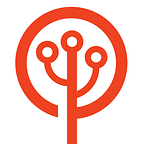How Slack is Reinventing Internal Communication
Your professional inbox is constantly on the brink of implosion? Between the project manager’s — many — reminders for the 10 o’clock meeting and the messages from your colleague who really wants to show you his hilarious collection of GIFs, you just don’t know where to click anymore? In a nutshell: you are on the verge of burnout? Don’t worry: you are not alone. According to a study conducted by Atlassian, an employee receives around 304 e-mails per week. He checks his inbox 36 times an hour and wastes 16 minutes trying to refocus. If you do the math, that’s a considerable loss of time… and money. To lighten mailboxes and boost employee productivity, a Silicon Valley startup created a collaborative tool which is revolutionising internal business communication: Slack.
What is Slack?
The principle of Slack is simple: it is an instant messaging app for businesses. A kind of Facebook Messenger… only better. Slack enables co-workers to communicate with each other and centralizes their discussions. Available on all devices — computers, smartphones, tablets — , Slack comes in a freemium version but also offers 3 paid subscriptions with different features. Adding to its charm is its rich ecosystem: the Slack app integrates with more than 600 third-party apps (among which DropBox, GitHub, MailChimp or Twitter) available on its marketplace App Directory.
How to use Slack
With its intuitive and user-friendly interface, Slack is a tool accessible to all. Once you have created a team, you just have to invite your co-workers to join you by adding their email addresses. Here you are, you can start chatting! You have the possibility to communicate with multiple persons in what Slack calls channels, chat rooms that you are free to create around any subject you choose (project, event, service…) and where you can add any member you wish. You can also address someone in particular by mentioning their username (@username), just like on Twitter. They will receive a notification. If you are more into private chatting, no problem: Slack allows you to create private channels accessible by invitation only and to send direct messages to any member of your team. To share a file (image, PDF, document…), a simple drag and drop is enough. Slack’s built-in search feature will retrieve it in the blink of an eye when you need it. Because yes, indeed: Slack backs up all exchanges! Still not convinced?
Why use Slack?
48,6% fewer emails, 32% more productivity: Slack has countless benefits for companies. By centralizing discussions on a single platform, it makes internal communication more fluid and effective. It also makes project management easier, notably by reducing by 25,1% the number of useless meetings. Multi-devices, Slack seamlessly synchronizes communications across all devices so that you never miss a thing. Last but not least, it is fun and gamified. The application interface is customizable, thus providing an enjoyable user experience: various themes are available, and the most creative can create their own. Finally, Slack supports emojis — you can even create your own! — and, above all, GIFs. Something tells me your colleague is going to love it!
Slack, the star of startups
As you will have understood, to try it is to adopt it. In a little more than 2 years of existence, Slack has become the darling of Silicon Valley — but not only! Prestigious companies such as eBay and AirBnb have adopted it, and it has also managed to seduce NASA and Harvard University. It boasts more than 3 million daily active users and is now valued at $3.8 billion, a sum which makes it a tech unicorn. According to the New York Times, it is the fastest-growing business application of all time. A resounding success for a project which originated from a failure. In 2011, Stewart Butterfield, co-founder of Flickr, created the online multiplayer game Glitch with his company Tiny Speck. Failing to reach the expected success, Glitch was shut down at the end of 2012. Butterfield and his team then decided to take the instant messaging system they had built for Glitch and turn it into an application. You know what happened next!
How Slack changed our team communication
Here at Les-Tilleuls.coop, we have been using Slack for almost a year. Whether to work on a project as a team or talk about life at our agency through GIFs, Slack has become essential to our daily activities and transformed our team communication:
- goodbye endless email threads, farewell overflowing inbox: we now only use emails for important company announcements;
- no more tedious email formalities: Slack allows us to go straight to the point;
- our internal communication is much more organized as each channel has one specific topic;
- Slack adds a dose of fun to our working routine and really lightens the mood!
In short, we love Slack. Just like thousands of other users who instantly freak out whenever Slack is down and turn to Twitter to express their despair…
What about you: do you use Slack?
